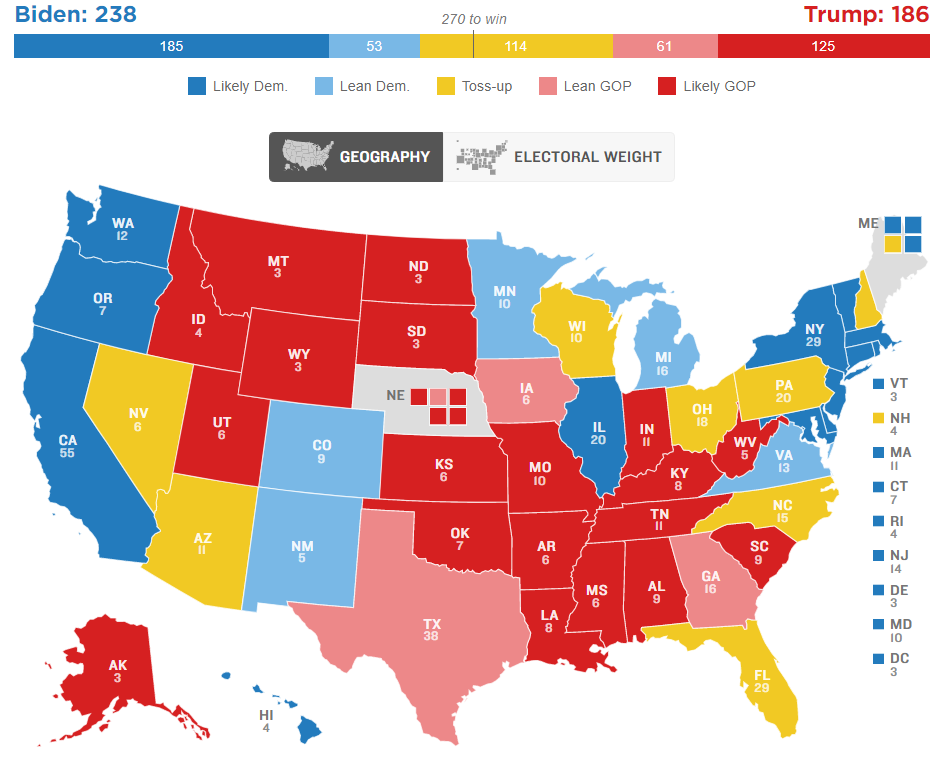每日外闻131

President Trump is in a political hole and has a lot of ground to make up (弥补,补偿) over the next five months if he hopes to win another term, an NPR analysis of the Electoral College map finds.
Given his handling of the coronavirus and protests over racism and police brutality (暴行,残酷)in the first six months of this year, Trump has slipped in many of the key swing states he won in 2016, such as Michigan, which now appears to lean toward former Vice President Joe Biden. The percentage of people disapproving of the job Trump is doing is at near-record highs for his presidency, and the intensity of the opposition is higher than for any past president.
Our analysis, including six scenarios for how the election could go, puts states in one of these categories:
- Likely Republican or likely Democratic: states that appear firmly behind one candidate and are not expected to be heavily contested.
- Lean Republican or lean Democratic: states that appear to favor one candidate but remain competitive.
- Toss-up (掷硬币,难以定夺的事): the most competitive states that either Trump or Biden has a good chance to win.
(Read more about our methodology here.)
To win the presidency, a candidate needs 270 electoral votes, a majority of the 538 electoral votes available across the 50 states and Washington, D.C. Most states are not very competitive. Their demographics and partisan voting histories make them likely to go to the same party they’ve broken for in recent elections, such as heavily Democratic California and heavily Republican Oklahoma.
In this presidential election, our analysis finds just 16 states are competitive, in addition to two electoral votes in states that award some by individual congressional districts — that they either only lean toward one candidate or are pure toss-ups. Just eight states and one of the congressional districts are considered pure toss-ups.
Viewed another way: About 45% of the U.S. population lives in the lean and toss-up states that will determine the presidential election, and less than a quarter of Americans live in the most competitive toss-up states.
Biden starts with a 238 to 186 advantage over Trump, when including states that lean in either candidate’s direction or that they’re likely to win. But Biden is no shoo-in (但拜登并非十拿九稳). The analysis finds he’s still 32 electoral votes short of the 270 he would need, and the Democrat needs to peel off key states Trump won in 2016 to get over the line.
shoo-in : 十拿九稳,稳操胜券的人
See you tomorrow










